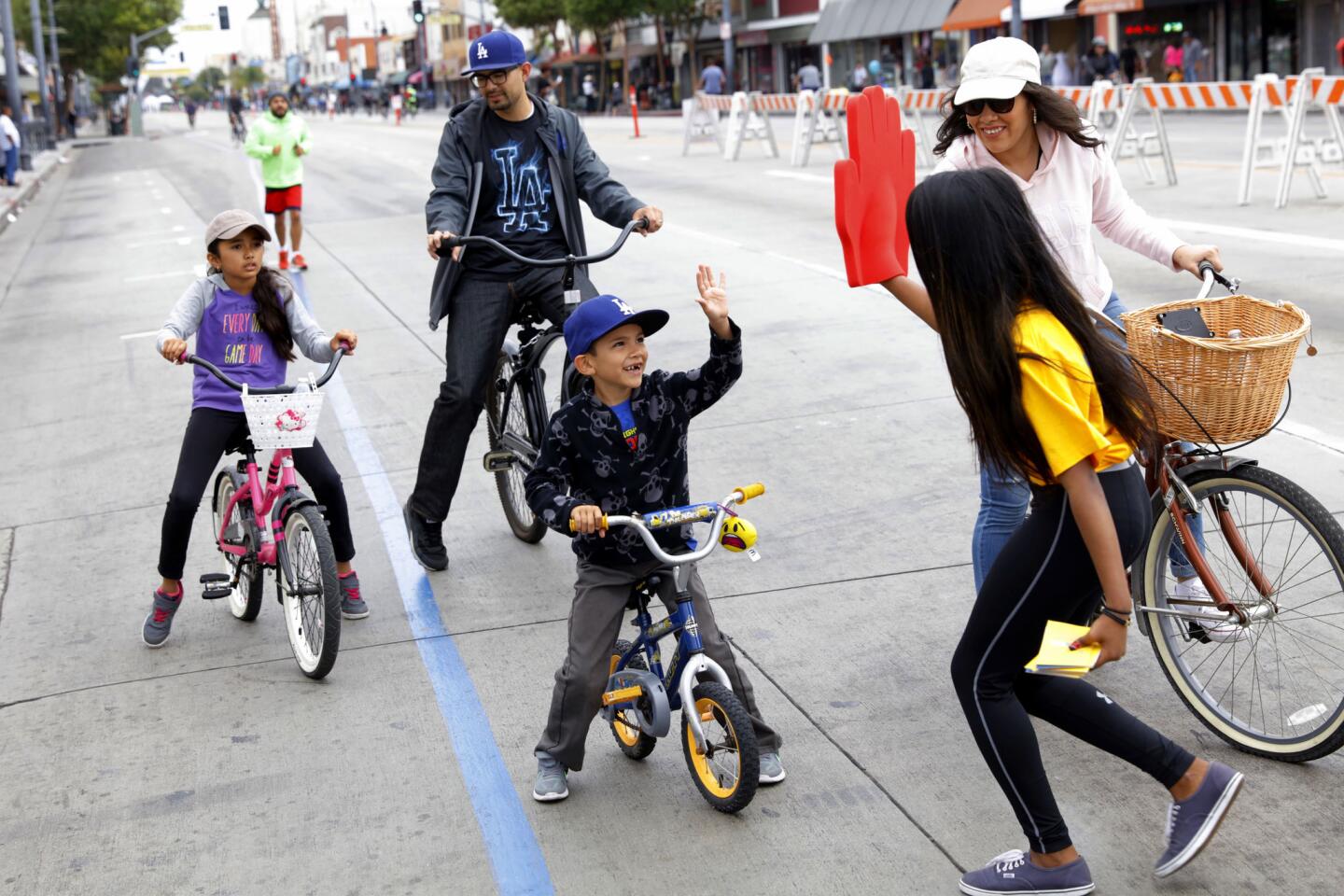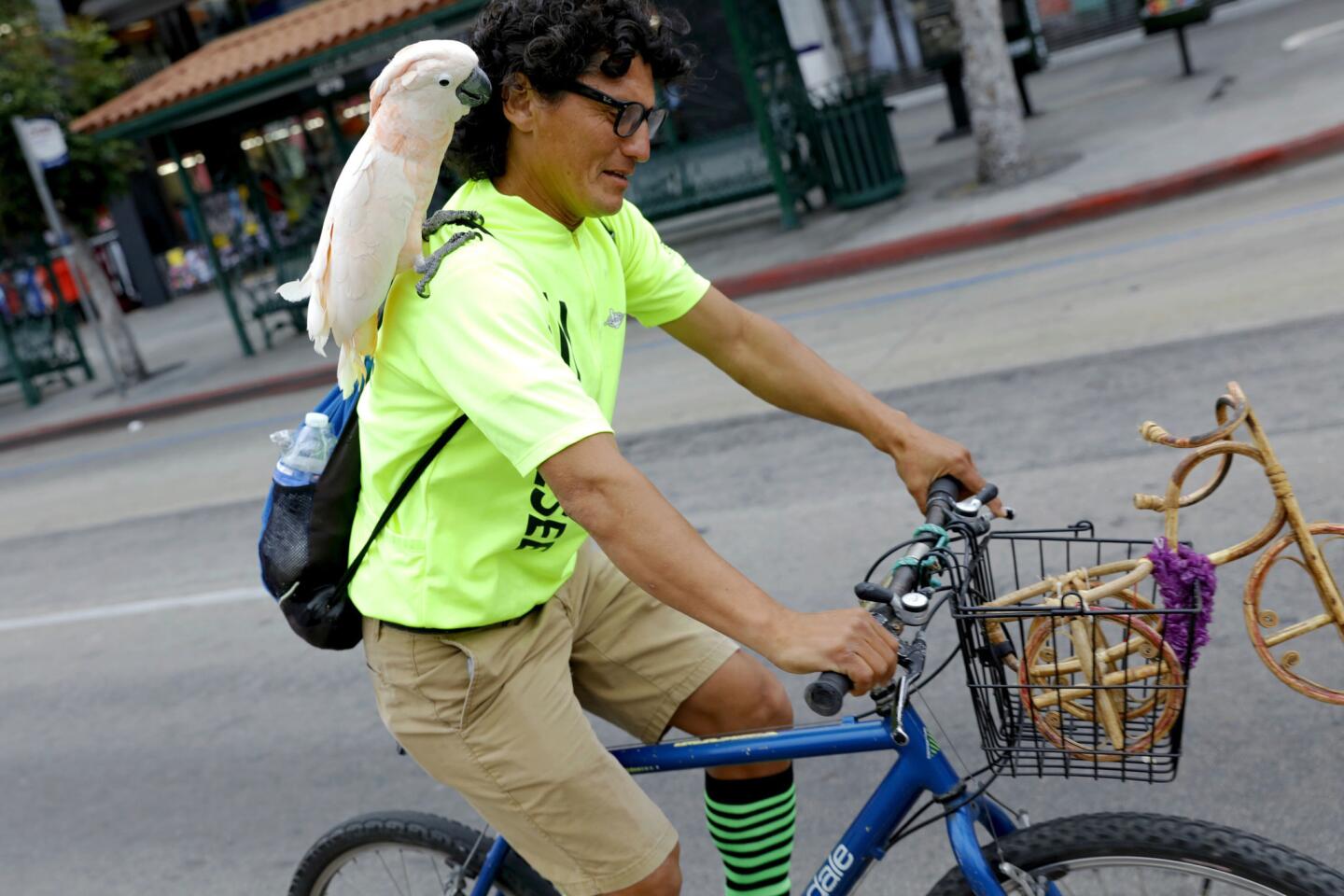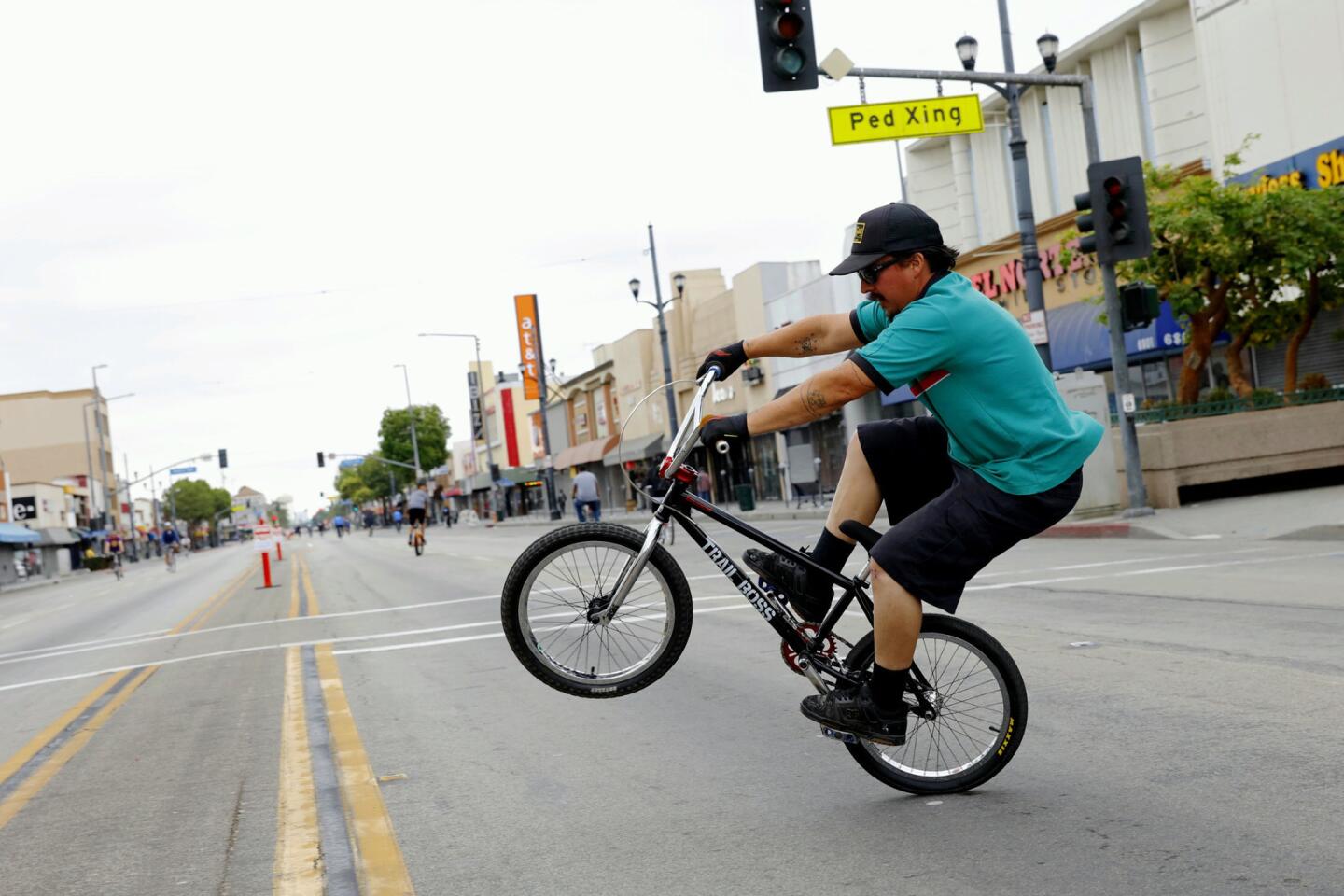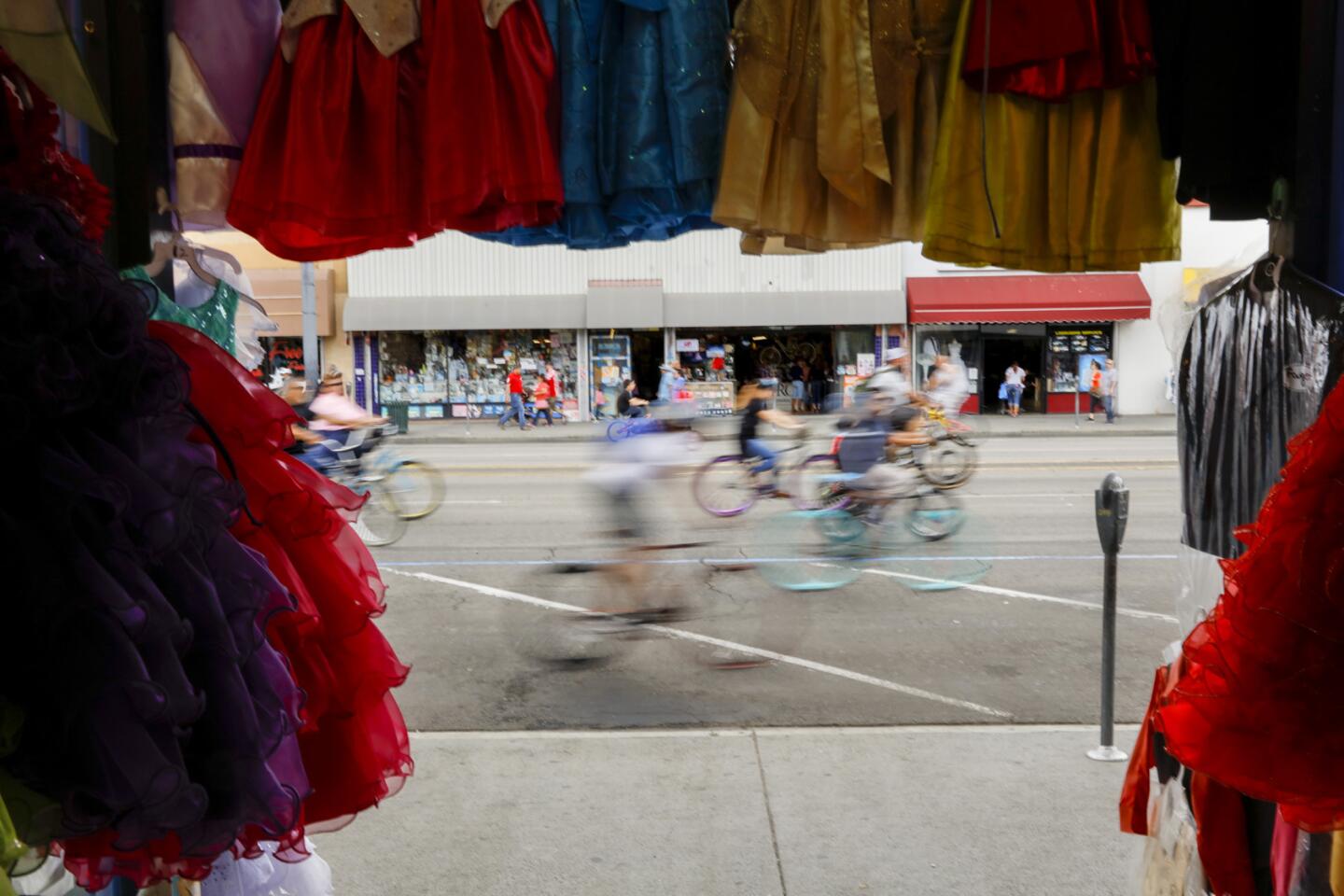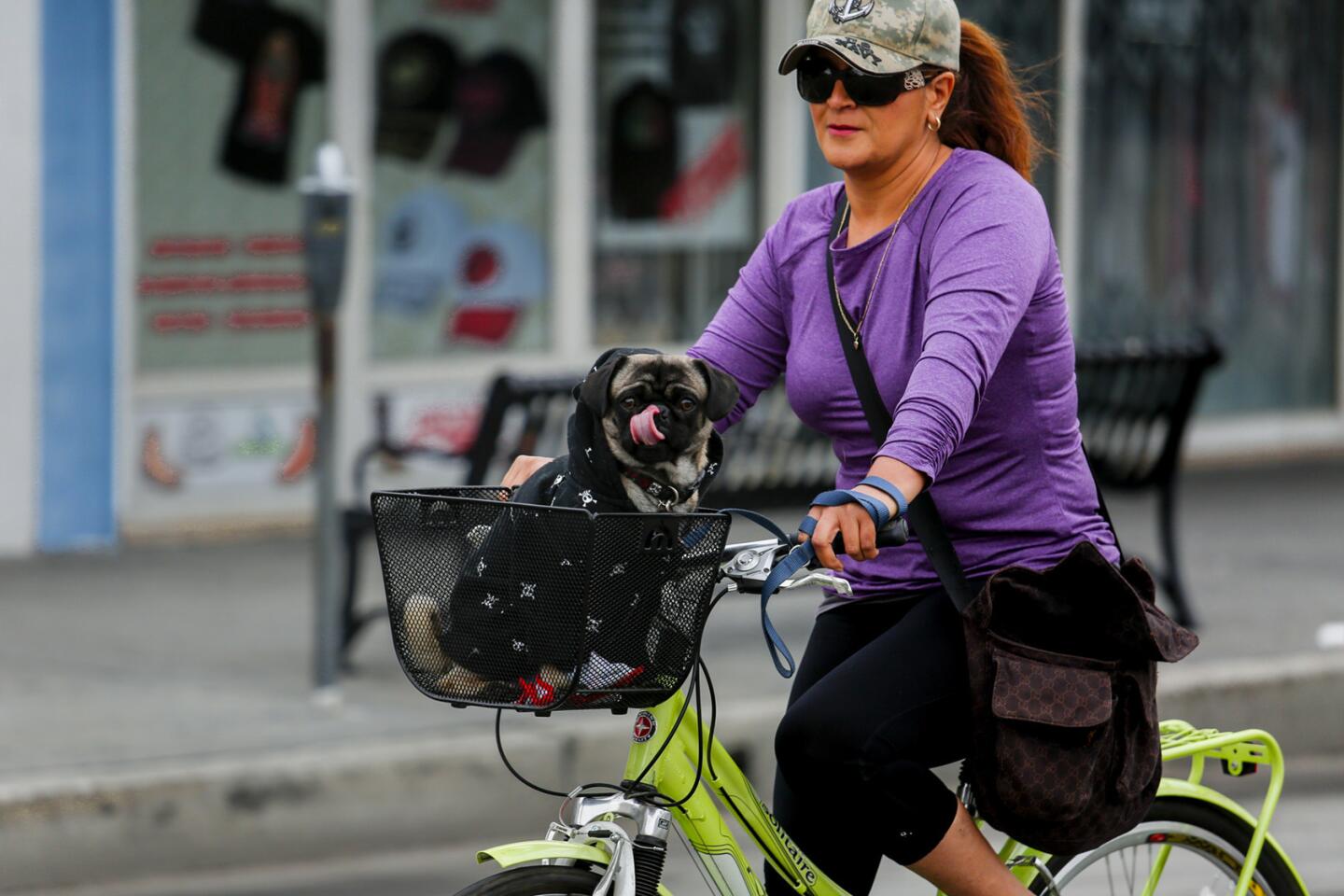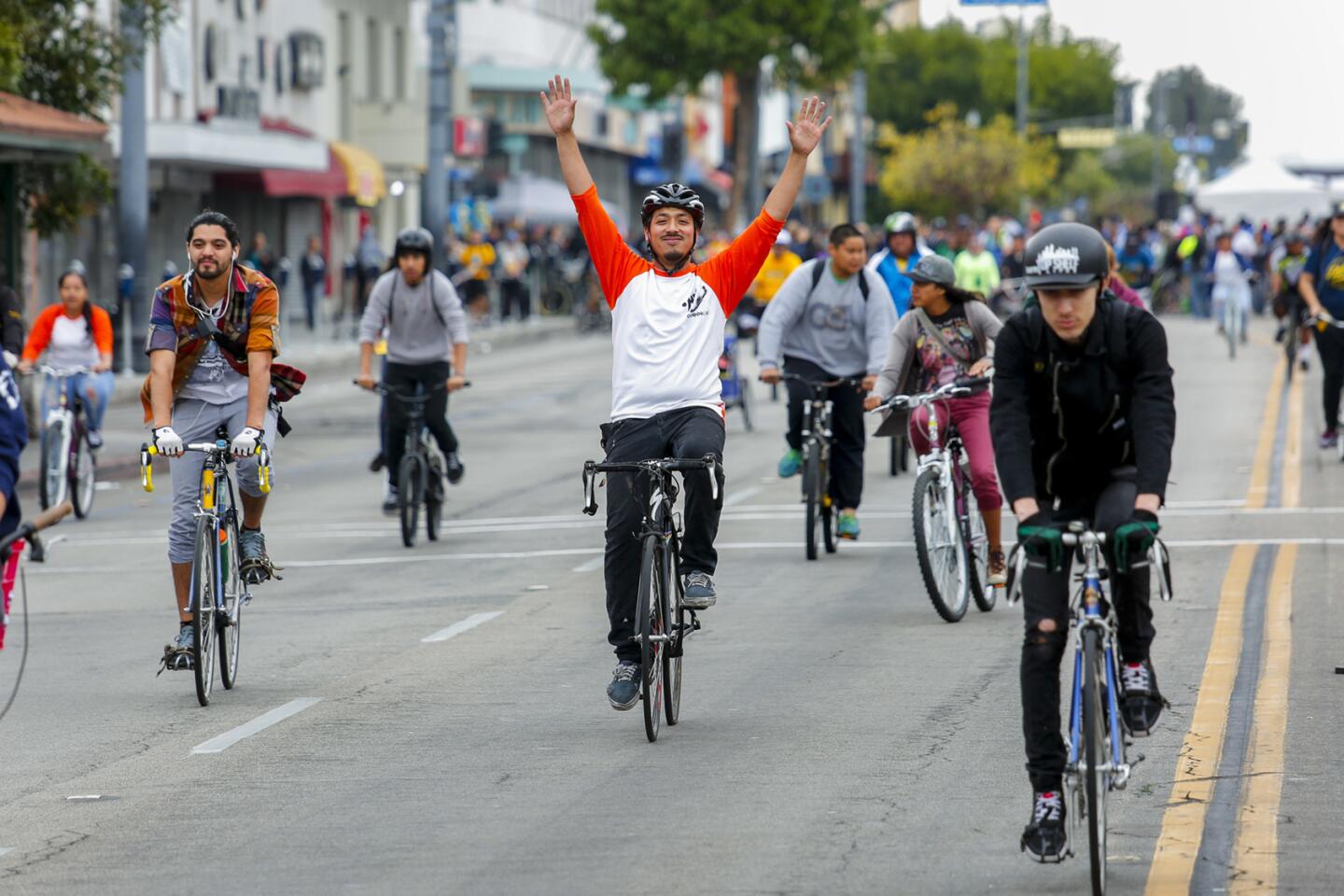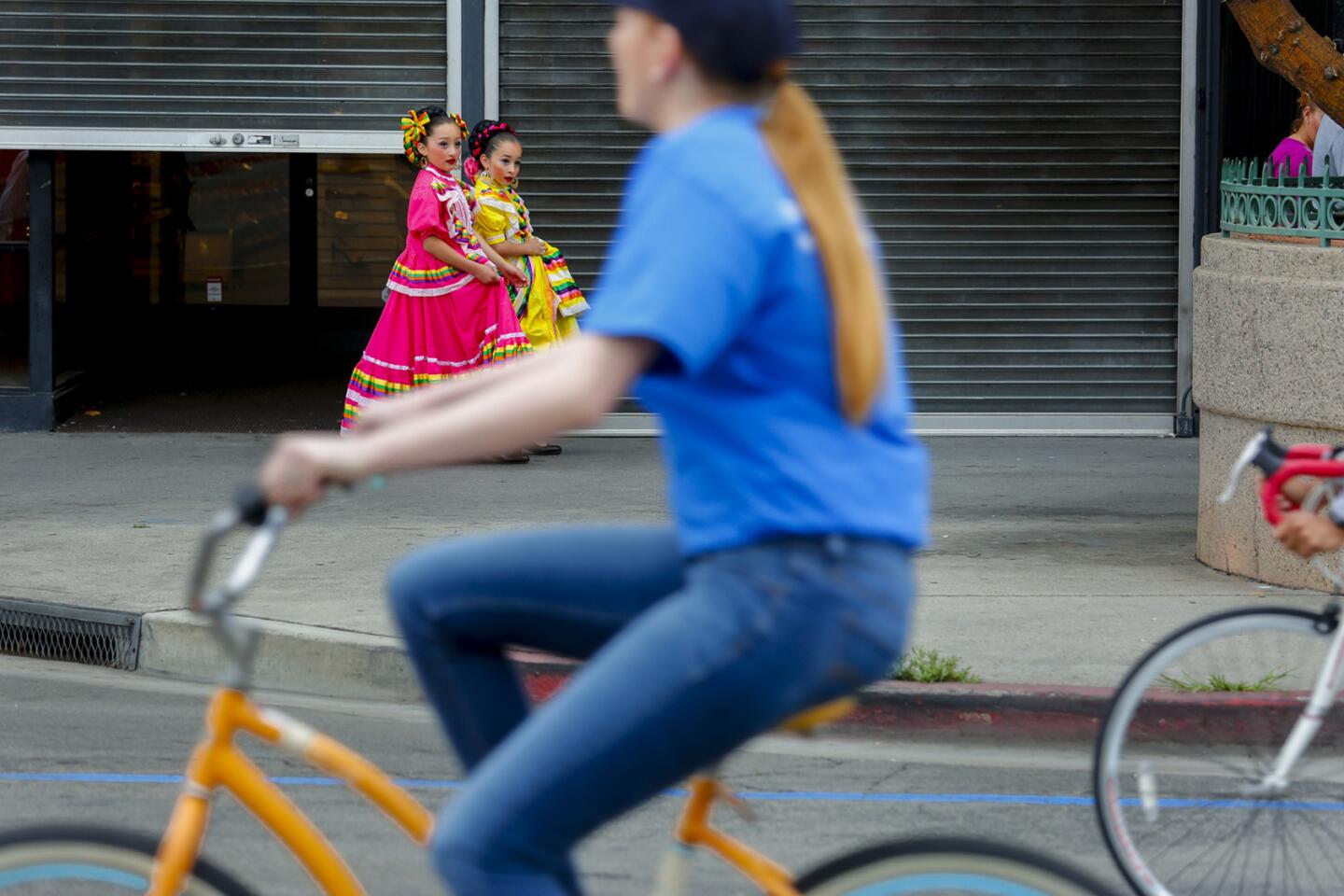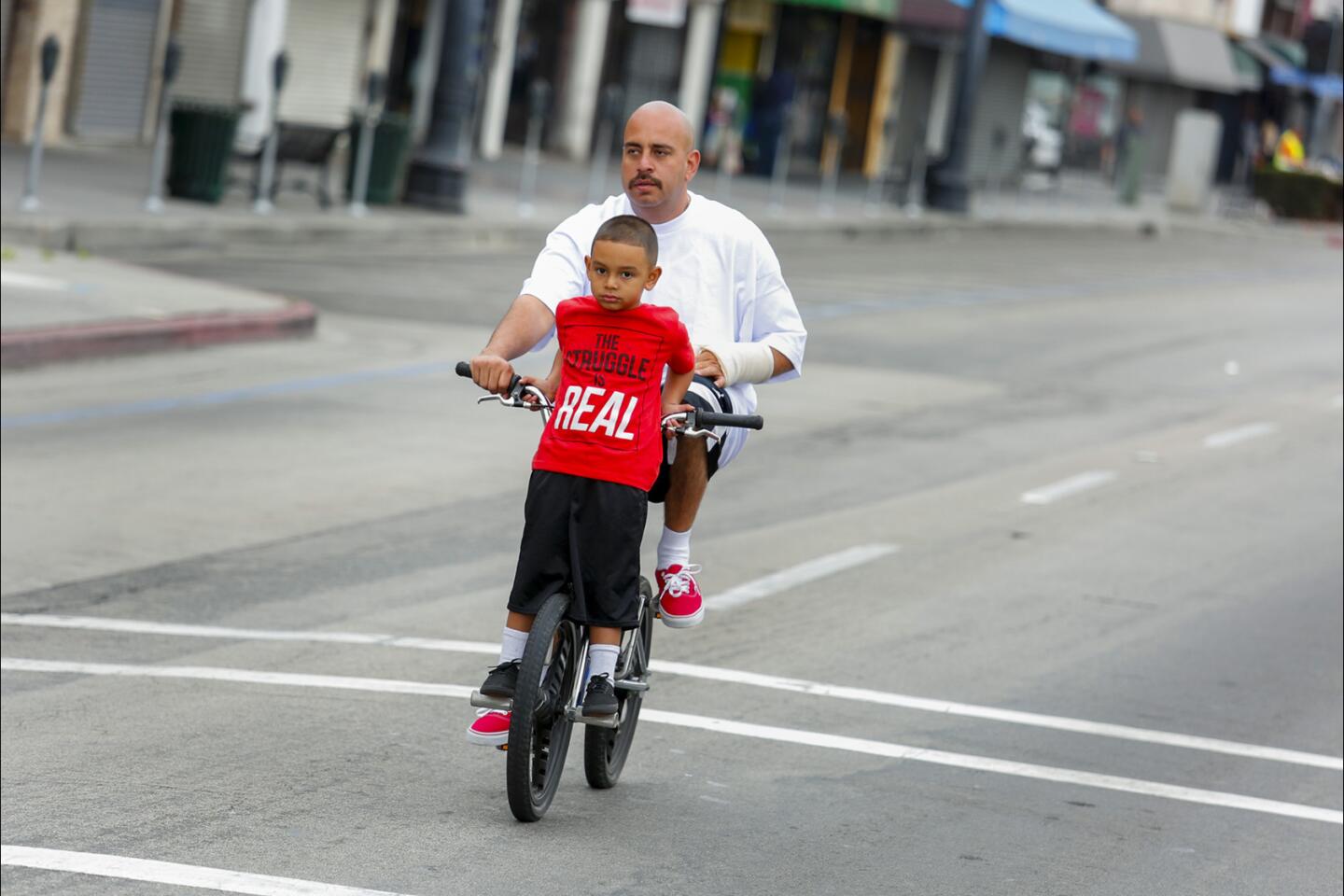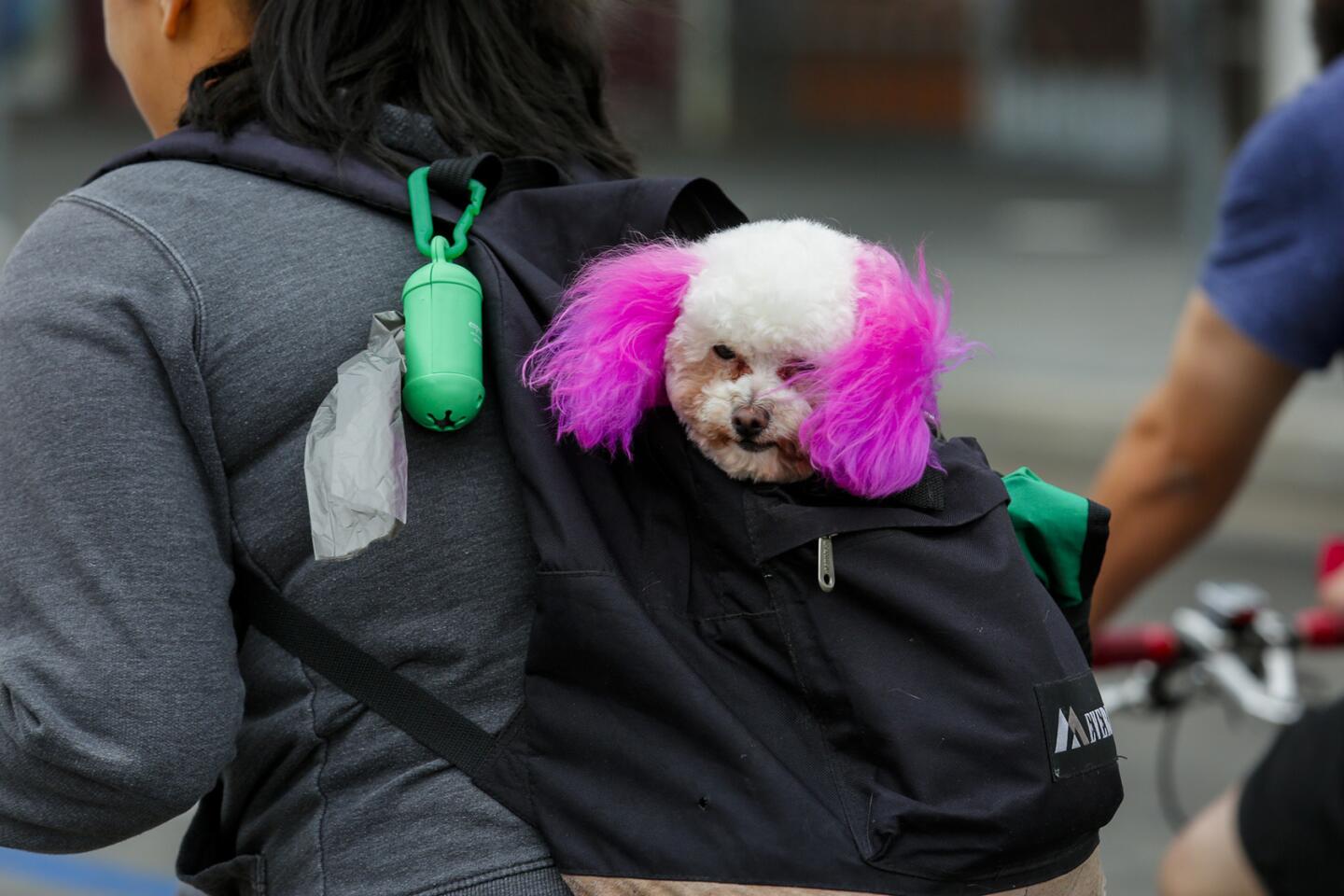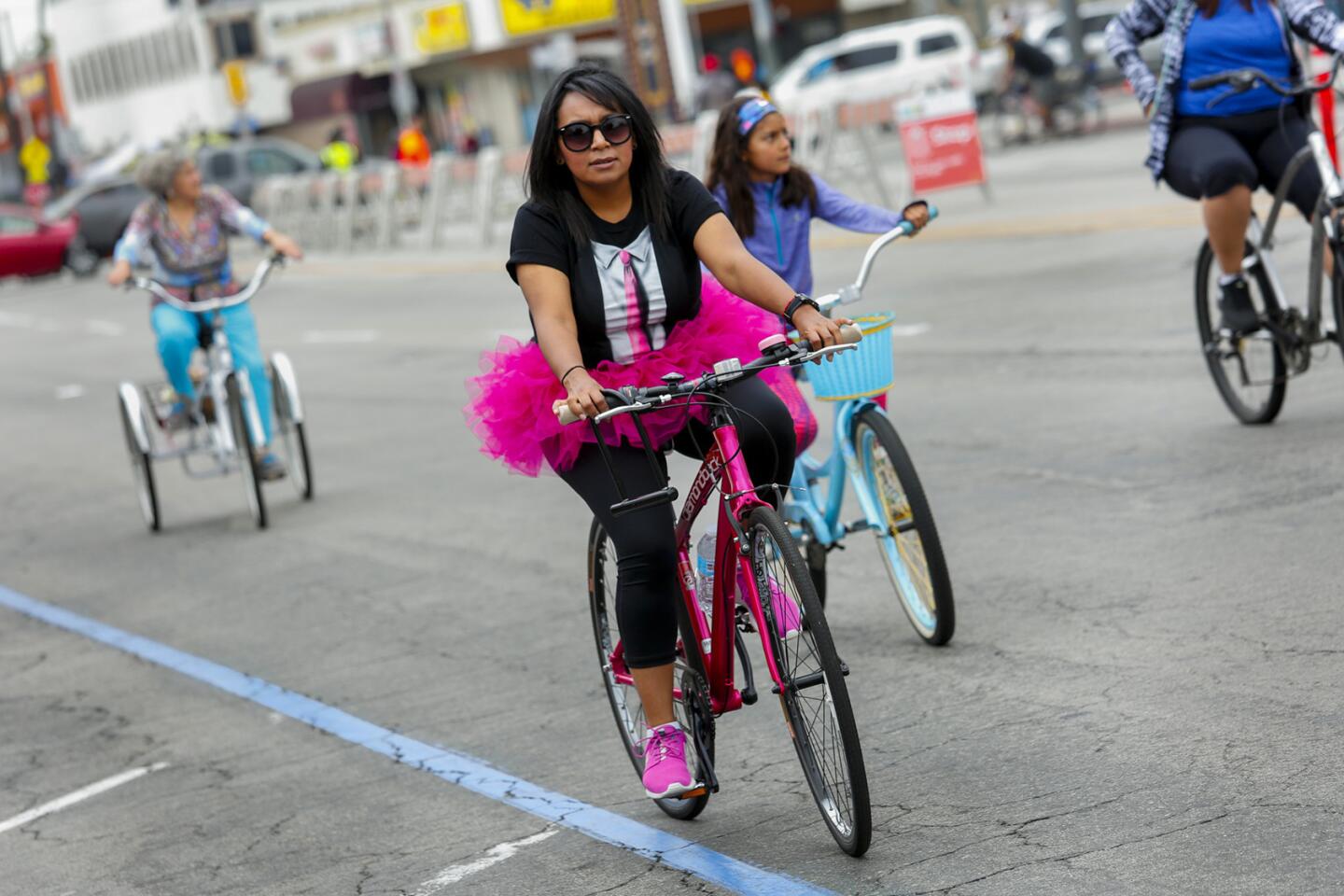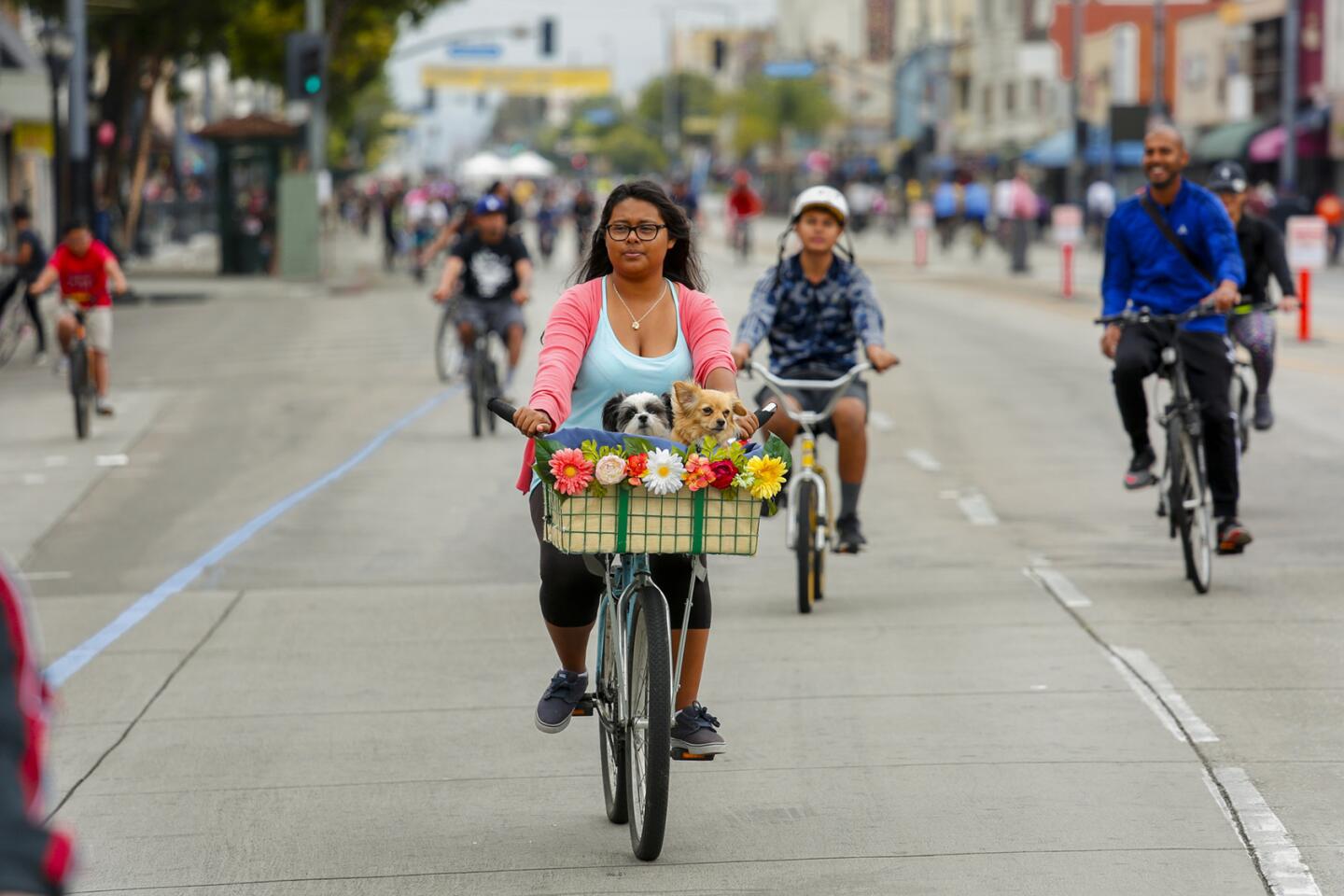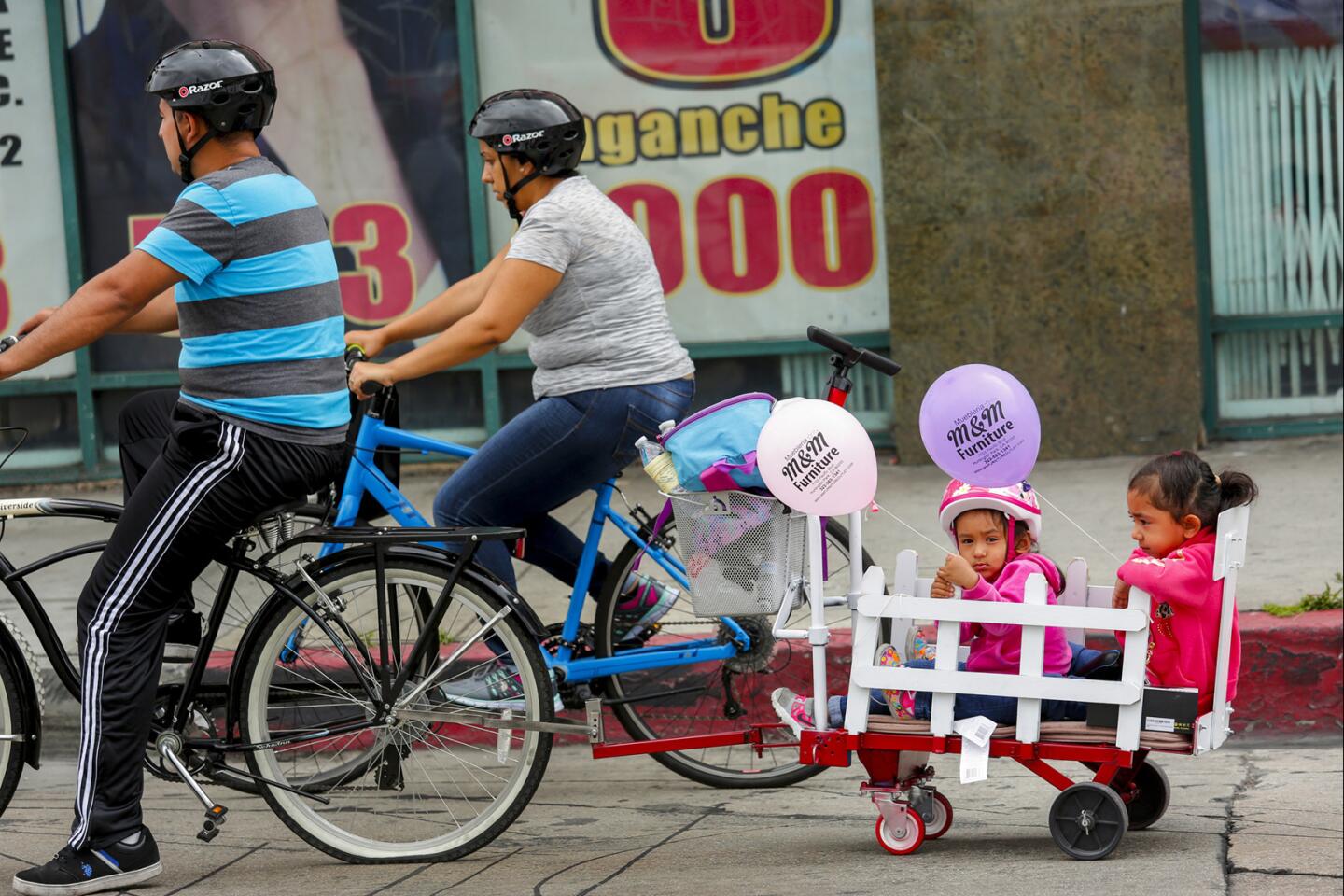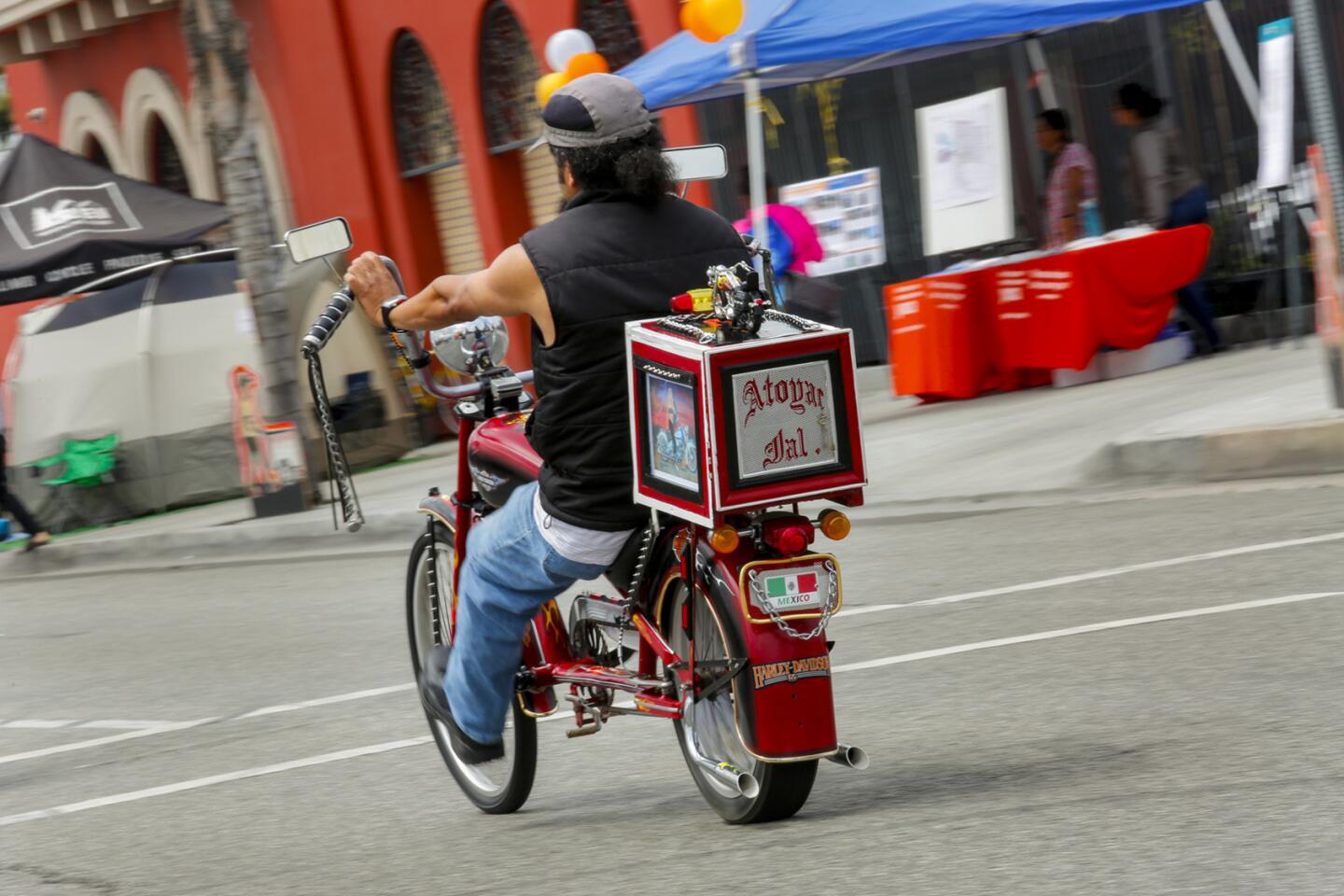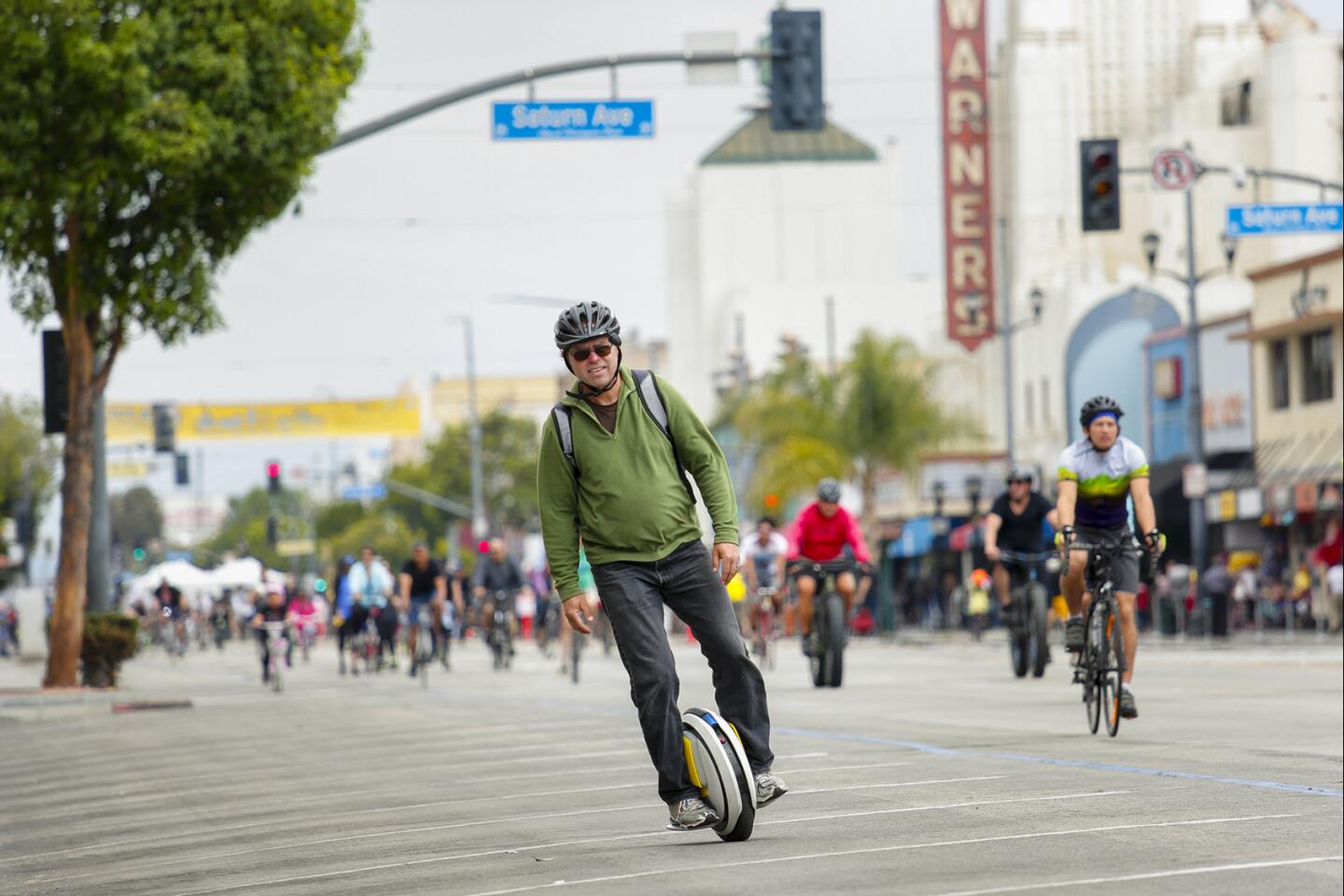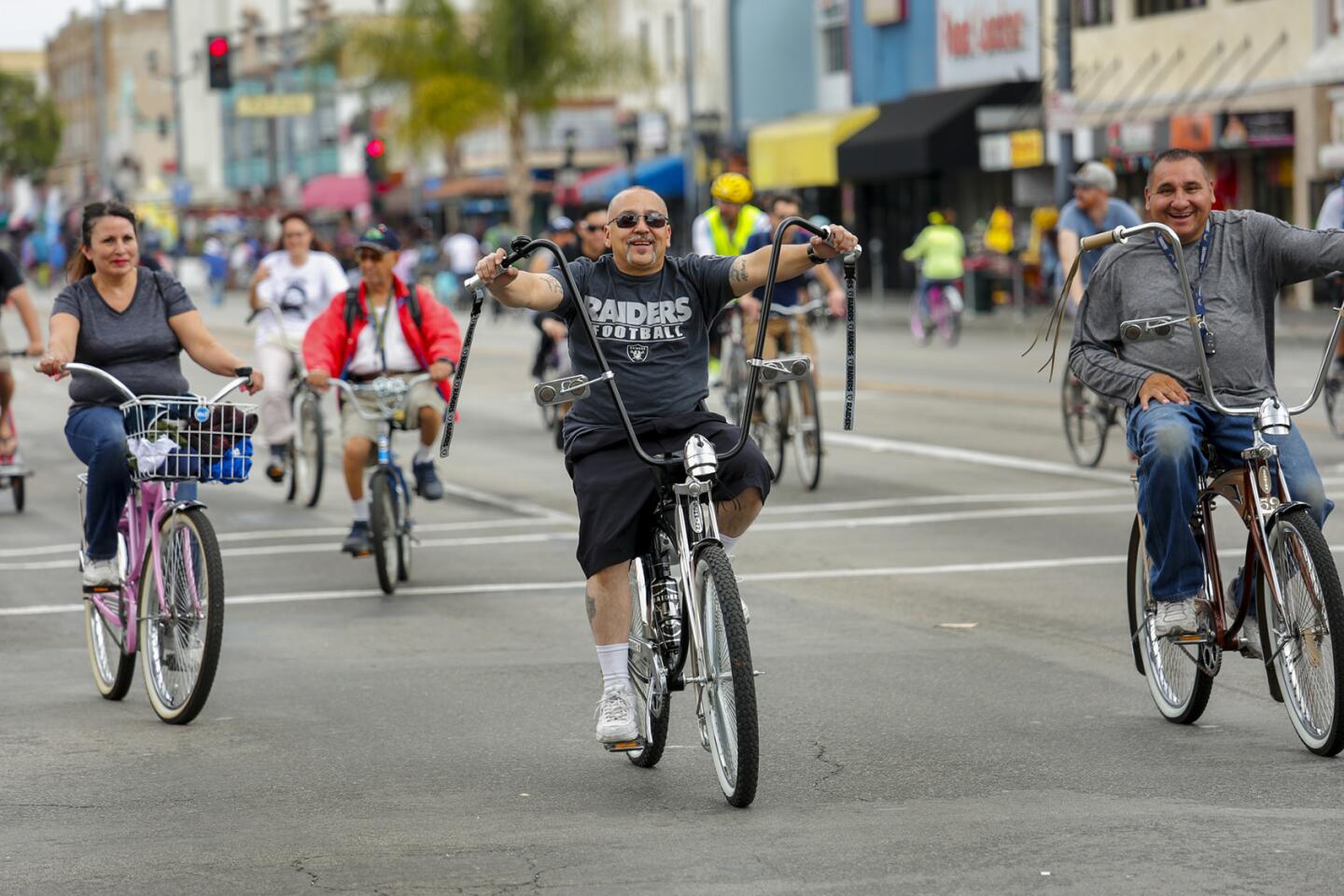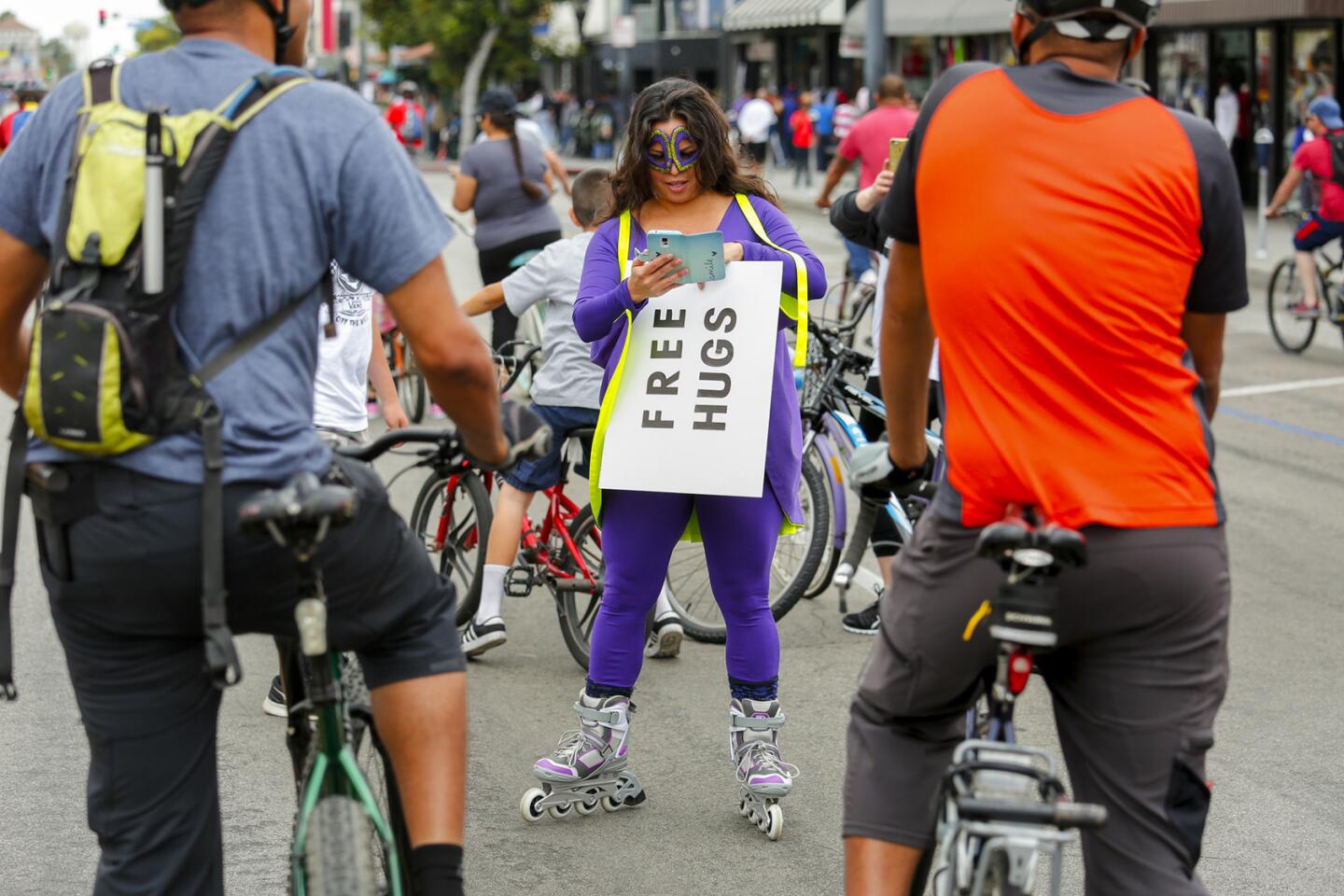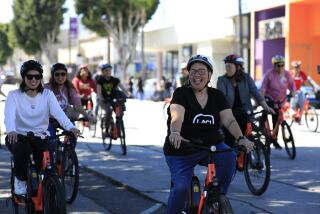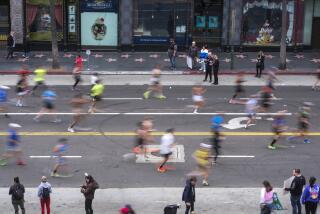The 17th CicLAvia arrived in southeastern Los Angeles on Sunday, kicking cars and drivers off the streets to make room for several thousand bicyclists, walkers, runners and skaters.
The nonlinear, 19-mile route winds north from Watts to Huntington Park, then south to Lynwood and extends east to the Los Angeles River.
Area roads will remain closed until 5 p.m.
The car-free event encourages residents to rediscover Los Angeles from a different perspective. The goal is to promote a cleaner environment and good health.
1/22
CicLAvia riders along Pacific Boulevard in Huntington Park on Sunday.
(Jay L. Clendenin / Los Angeles Times) 2/22
Ignacio Martinez, 6, center, gets a high five from CicLAvia volunteer Kazi Maimuna as sister Valeria, 9, left, mother Mariana and father Ignacio look on. The family is from Huntington Park and hoped to ride a couple of miles on Sunday.
(Jay L. Clendenin / Los Angeles Times) 3/22
Jose Molina, of Silver Lake, takes his Moluccan Cockatoo, named Ice Cream, for a ride.
(Jay L. Clendenin / Los Angeles Times) 4/22
Travis Gonzales, of Sherman Oaks, does wheelies during CicLAvia.
(Jay L. Clendenin / Los Angeles Times) 5/22
CicLAvia riders near the start in Huntington Park.
(Jay L. Clendenin / Los Angeles Times) 6/22
A variety of characters and bikes are seen along Pacific Blvd. in Huntington Park during the latest CicLAvia bicycle festival on Sunday. (Jay L. Clendenin / Los Angeles Times)
7/22
Friends catch a ride, along with a couple dogs, along Pacific Blvd. in Huntington Par kCicLAvia on Sunday. (Jay L. Clendenin / Los Angeles Times)
8/22
Bikes and passersby become a blur along Pacific Blvd. in Huntington Park during CicLAvia on Sunday. (Jay L. Clendenin / Los Angeles Times)
9/22
Many people carried their dogs with them. (Jay L. Clendenin / Los Angeles Times)
10/22
Bikes packed Pacific Blvd. in Huntington Park during the latest CicLAvia on Sunday. (Jay L. Clendenin / Los Angeles Times)
11/22
All types of bikes filled Pacific Blvd. in Huntington Park during the latest CicLAvia on Sunday. (Jay L. Clendenin / Los Angeles Times)
12/22
Girls set to perform during CicLavia festivities walk past bicyclists along Pacific Blvd in Huntington Park on Sunday. (Jay L. Clendenin / Los Angeles Times)
13/22
A young boy catches a ride along Pacific Blvd. in Huntington Park, during the latest CicLAvia on Sunday. (Jay L. Clendenin / Los Angeles Times)
14/22
Many people carried their dogs with them. (Jay L. Clendenin / Los Angeles Times)
15/22
Many people carried their dogs with them. (Jay L. Clendenin / Los Angeles Times)
16/22
A variety of characters and bikes are seen along Pacific Blvd. in Huntington Park during the latest CicLAvia bicycle festival on Sunday. (Jay L. Clendenin / Los Angeles Times)
17/22
Many people carried their dogs with them. (Jay L. Clendenin / Los Angeles Times)
18/22
Families took park in the latest CicLAvia bicycle festival on Sunday. (Jay L. Clendenin / Los Angeles Times)
19/22
A variety of characters and bikes are seen along Pacific Blvd. in Huntington Park during the latest CicLAvia bicycle festival on Sunday. (Jay L. Clendenin / Los Angeles Times)
20/22
Bicyclists, walkers, runners, skaters and this guy make their way along Pacific Blvd. in Huntington Park during the latest CicLAvia on Sunday. (Jay L. Clendenin / Los Angeles Times)
21/22
Bikes packed Pacific Blvd. in Huntington Park during the latest CicLAvia on Sunday. (Jay L. Clendenin / Los Angeles Times)
22/22
Free hugs too at CicLAvia on Sunday. (Jay L. Clendenin / Los Angeles Times)
Previous CicLAvia routes have snaked through downtown, East Los Angeles, the Westside and along Wilshire Boulevard.
The event is modeled after the “open streets” festival in Bogota, Colombia, which began nearly 40 years ago.
At various stations and hubs along the routes, participants can see live musical and dance performances, line up at a food truck, get their face painted and even take a Zumba class.
CicLAvia’s organizers are also trying to boost the event’s economic impact, encouraging businesses to stay open even though streets are closed and coordinating special offers for CicLAvia riders and walkers. A 2013 UCLA study found that sales for businesses along CicLAvia routes increased by anywhere from 10 to 57%.
A few Southeast businesses along the route are offering deals on phone accessories; bilingual children’s books; ear, nose and throat consultations; and furniture, among other things.
The car-free events, run by nonprofit CicLAvia, began in 2010 with a route that stretched from East Hollywood to Boyle Heights. The most recent event in March followed a four-mile route that stretched through Pacoima, Arleta, North Hills East and Panama City.
The festival’s organizers picked Southeast Los Angeles for Sunday’s event because it was a “dynamic, vibrant and often under-served” community, said CicLAvia Executive Director Romel Pascual.
The open-air street festivals now happen about four times a year and draw, Pascual said, about 50,000 to 100,000 people each time. Pascual wants to make it a monthly occurrence.
“When you get out of your car and get on a bike and walk through these different communities, you realize you share things in common,” he said.
frank.shyong@latimes.com
Twitter: @frankshyong


